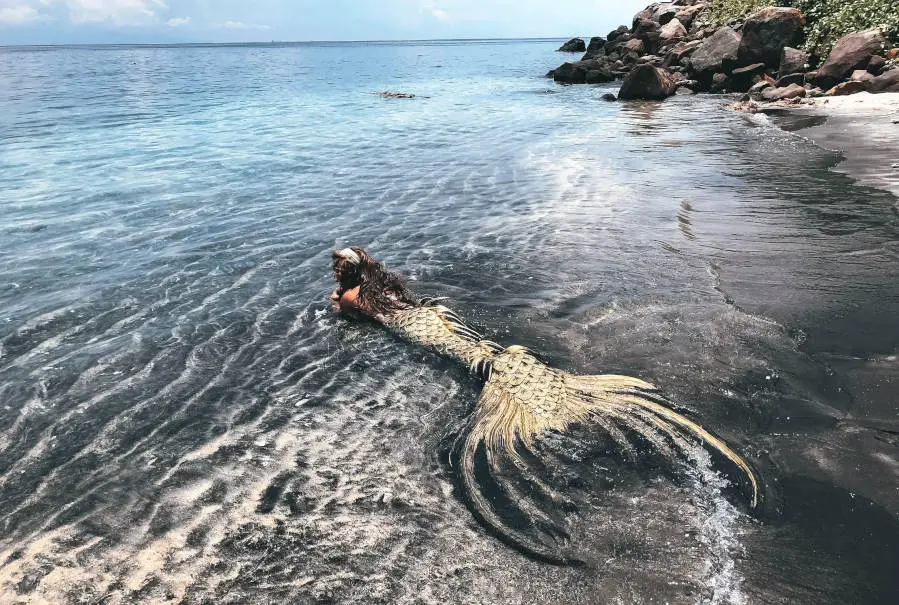Mermaid myths have existed since about 1000 B.C. or earlier and are spread all over the world. Is it possible that there is a little bit of truth behind all the myths – are mermaids real?
I searched for clues to find out whether mermaids could really exist and found some interesting facts.
Mermaids are not real according to the current scientific knowledge because there is no proof and they could not exist with a fishtail from a biological point of view. It is however theoretically possible that there are real mermaids that look more like mammals and have some other specific features.
Although science has not yet been able to prove that there are real mermaids, the question arises whether such or very similar beings could not hide somewhere in the oceans.
After all, only about 5% of the sea has been explored so far. So why should there not be any mermaids out there?
Could mermaids exist from a scientific point of view?
The consensus among scientists is that it is virtually impossible that mermaids could physically exist.
There are a few reasons for that, but the most important one is that there has not been any real proof of mermaids so far.
According to the National Ocean Service, no scientific evidence for the existence of mermaids has been found so far.
There have been no real skeletons or finds from the past, nor any living mermaids ever found.
Furthermore, scientists also state that the fact that mermaids are mixed creatures makes it impossible for them to exist. At least as we imagine them: as beings with a human upper body and a fishtail for a lower body:
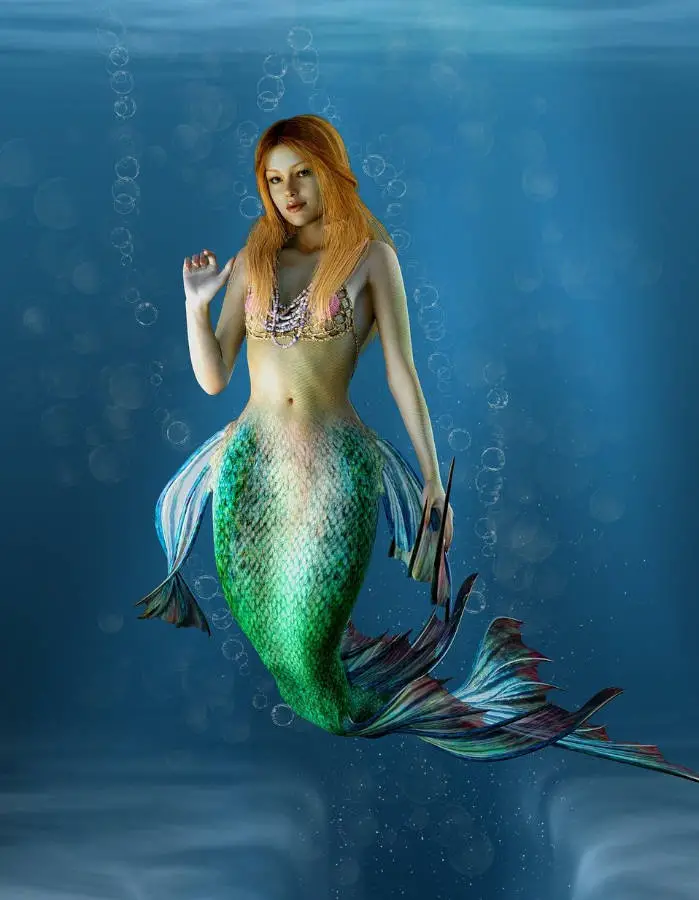
There are two main reasons that show that mermaids with fishtails could not exist:
- Mermaids would freeze to death in the cold sea, because of their human upper bodies
- Human and fish body parts cannot be found in the same body (they could not defecate and reproduce)
These two might not actually be definite evidence against mermaids though if you reconsider the concept of mermaids. But we will get into that.
Mermaids would freeze to death in the cold sea
Firstly, mermaids could not withstand the temperatures that prevail in the sea. This is because if they are a hybrid of humans and fish, their upper bodies are not adapted for life underwater.
Fish can survive in very low temperatures, but they are cold-blooded animals. That means, their body temperature depends on the ambient temperature, so they can still live in very cold areas.
Humans, on the other hand, are warm-blooded because they are mammals and thus must always keep their body temperature constant in order to survive.
In water, humans cool down about 25 times faster at the same temperatures as in the air. This means that at 80°F (27°C) water temperature, you cool down just as fast as at 42°F (6°C) air temperature.
This shows how unlikely it is that mermaids could live in the cold sea while their upper body is human.
From about 89°F (32°C) water temperature a human can still compensate the heat loss, but as soon as it is colder than 77°F (25°C) in the water, it becomes critical in the long run.

That means the only place where mermaids could live would be in the tropics around the equator because there the water is up to 86°F (30°C) warm.
But even there, there’s a problem: this temperature only applies to the surface of the water.
As soon as you dive a few meters into the depths, the temperatures drop dramatically fast. In the deep ocean, below 200 meters depth, the average temperature is only 39°F (4°C).
So mermaids could only survive on the surface of the water in the tropics without their human torsos cooling down.
This would also suggest that it is very unlikely that mermaids have been hiding in the depths of the sea until now, which is the part of the ocean we know the least about.
If they could withstand these temperatures, their human upper body would have to look very different from what we imagine them to look like: Either very fat or very hairy.
That’s because the only mammals that are equipped to handle the cold temperatures in the ocean are marine mammals like seals and whales, which have thick blubber pads, and animals like otters, which have special fur that keeps them warm.
Human and fish body parts cannot be found in the same body
Secondly, human and fish body parts cannot function together in one body because humans and fish are evolutionarily very far apart.
200 million years ago in the Triassic Earth Age, after they had evolved from fish, the first reptiles evolved into mammals. Since then mammals have only become more and more different than fish.
So, mammals have actually evolved separately from fish for hundreds of millions of years. Besides that one lives on land and one in water, a lot in their bodies works differently nowadays.

One example is metabolism. As mentioned, fish are cold-blooded and humans are warm-blooded. Combining both body temperature regulation systems in one body would be very complicated.
Because of this evolutionary distance between fish and humans, it would also not be possible for mermaids to defecate and reproduce.
So, mermaids could not go to the toilet. This is because they would have to have two different digestive systems at the same time. Humans have a complex digestive system that converts food into feces and urine that is excreted through the anus and bladder.
But the internal organs of humans and fish don’t match perfectly. Most fish excrete fecal material through a cloaca and urine through an opening called a pore. Some fish even urinate through their gills by excreting ammonium.
Furthermore, mermaids would have difficulty reproducing. This is because humans use internal fertilization, but most fish use external reproduction. That means, fish lay their eggs in the water and then another fish comes along and fertilizes them.
However, this would not be so easy with a hybrid human and fish. Would they raise their babies like humans and take care of each baby individually, or would you lay thousands of eggs in the water like fish and leave the babies to their own fate?
[Related: How do mermaids have babies?]
So, according to science, there are no real mermaids because there is no scientific evidence and human-fish-creatures could not exist from a biological standpoint. But what if mermaids are not half fish?
What would a real mermaid look like?
If human and fish body parts cannot exist in the same body, there is only one possible solution: mermaids are not half-fish but more similar to something like half-seal.
That would mean they are not part fish at all, but instead full mammals.
Interestingly in ancient Greece, where most well-known mermaid myths originate, the Tritons, who are mermen or merpeople were sometimes depicted with a dolphin tail.
If mermaids were complete mammals their existence would actually be much more likely from a biological standpoint than if they were half fish.
The aquatic ape theory
There is a scientific theory that could help explain how mermaids might have evolved: the aquatic ape theory.
In the 1950s a scientist called Hardy developed this theory as an alternative explanation for how we, as humans, developed certain features that distinguish us from all other animals:
He proposed that humans had ancestors that lived in a watery environment for a period of time.
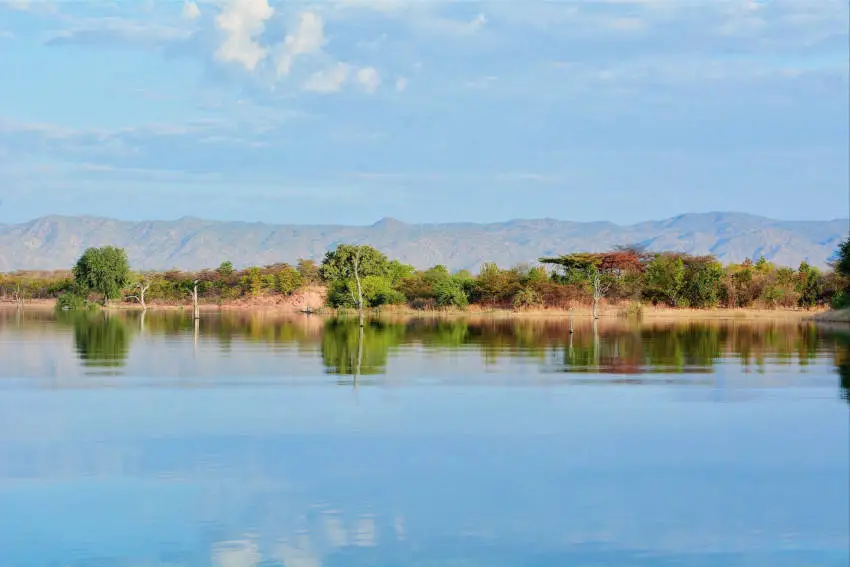
Although this aquatic ape theory is very controversial and most claims do not have any scientific backing, it can hold as a somewhat plausible basis for the thought experiment about whether there could be real mermaids.
According to Hardy, the fact that these aquatic apes started living around water, let to the upright walk that we still use to this day. The apes supposedly had to start walking on to legs when wading through the water.
Another point that could be explained by this theory is that humans are the only mammal that has no real fur and is pretty much naked.
Besides us, the only other naked mammals are sea mammals like dolphins, whales, manatees and some land-dwelling animals like the elephants who also had water-dwelling ancestors.
So, it would sound logical that humans could have had water-dwelling ancestors as well.
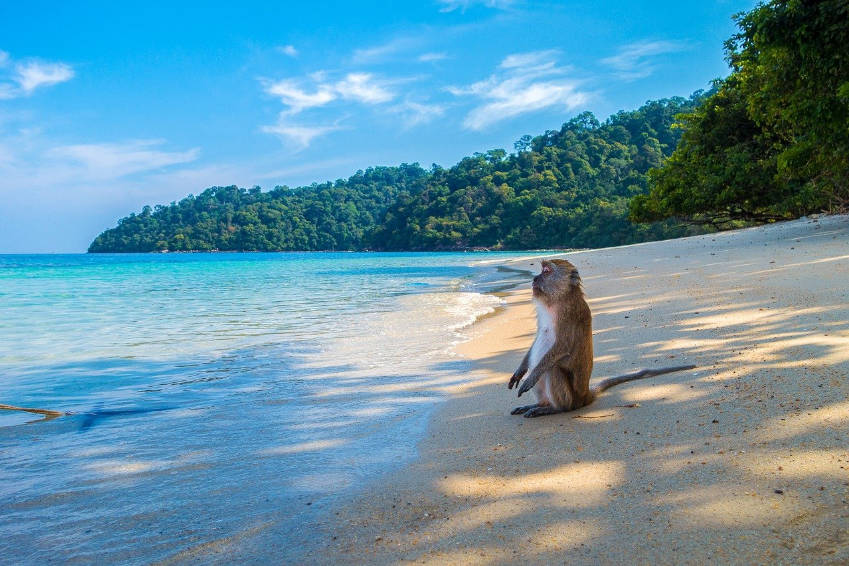
How mermaids might have evolved
Now, if we assume that humans had half-aquatic ancestors, it also seems possible that a group of these aquatic apes split off the apes that eventually came back out of the water and became humans.
That other group might have stayed in the water and continued to adapt to life in the water and eventually in the ocean: They could have evolved into real mammal mermaids!
The idea that aquatic apes could have turned into sea mammal mermaids is actually not very far-fetched because other mammals did just that:
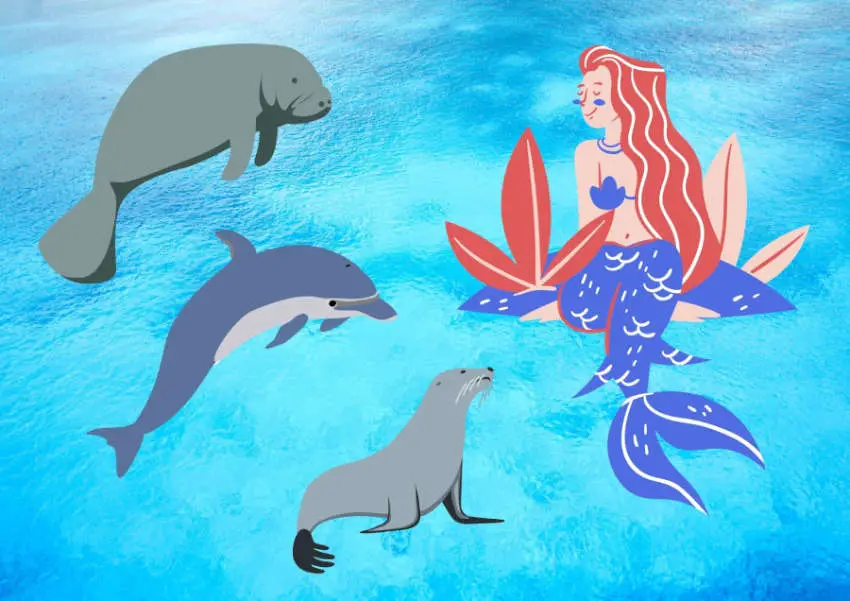
They went from land into the water and developed tails and bodies that were perfectly adapted to aquatic life.
After the first amphibians came onto land a few hundred million years ago and then evolved from reptiles to mammals, the then land-dwelling mammalian ancestors of dolphins/whales, manatees and seals went back into the ocean.
In this video you can see what the evolution of the whales/dolphins (they evolved from the same animal) looked like:
As described in the video, dolphins and whales evolved from a small mammal called pakicetus that lived on land and hunted in the water, meaning it was already semi-aquatic.
With time, the species spent more and more time in the water and because of that, several adaptations occurred.
They became more streamlined and longer, their forearms turned into fins, their tails grew thicker and more muscular and they developed a fluke.
Since they were moving forward using the propulsion of their flukes their hind legs became unnecessary and so their hind legs completely disappeared over time.
The interesting thing is that all the mammals that went from land into the water, all ended up having these kinds of similar characteristics, like streamline and thick bodies that help them glide through the water and stay warm and the development of fins for steering (from the arms) and flukes for propulsion (from tail/legs).
So, theoretically speakin, mermaids could have evolved from the aquatic apes just like all these sea mammals evolved from their land-dwelling and semi-aquatic ancestors.
Here is an overview of the timeline in which mermaids could have evolved from the aquatic apes compared to dolphins and seals:
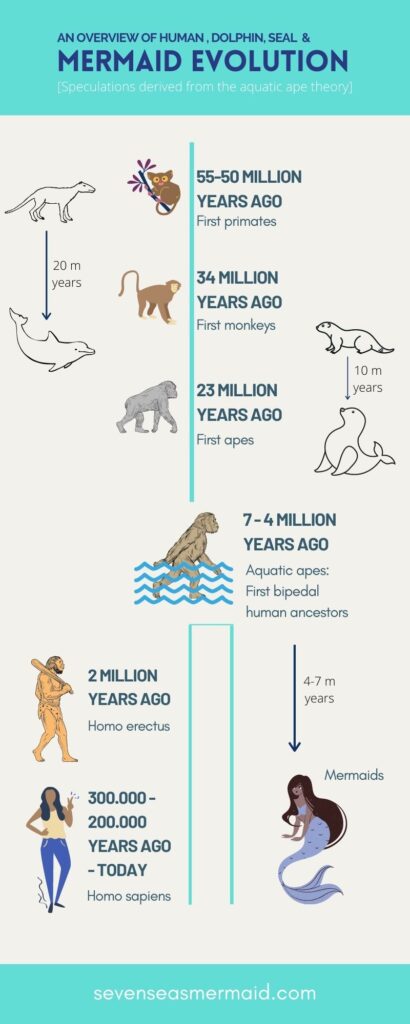
As you can see in the infographic, it took about 20 million years for the dolphins’ land-dwelling ancestors and 10 million years for the seals’ land-dwelling ancestors to become fully adapted to life in the water.
Today, dolphins and manatees are fully aquatic, spending their whole lives in the water, while seals are semi-aquatic, meaning they live on land and feed in the ocean.
A real mermaid would probably look similar to a seal
The way these sea mammals evolved gives us vital clues about how an aquatic ape could have evolved into a mermaid and thus how real mermaids would look like.
Since the aquatic apes could have only lived 4-7 million years ago, mermaids would not have had as much time to evolve as dolphins for example.
So, how would have an aquatic ape have evolved into a mermaid?
Other than the ancestors of whales, who walked on four legs, the aquatic apes would have actually had an advantage underwater, because the ape body would have already been more streamlined because apes can walk on 2 legs instead of 4.
Because of this, there would also be no need to grow a longer tail as dolphins/whales did, but it would be likely that the legs would become shorter and instead the core would have become more strong and muscular.
Because in order to use the legs (or tail) for propulsion, a lot of core strength is necessary and it is more ideal to have a strong core.
Seals did not lose their hind legs as dolphins/whales and manatees did, but their feet actually turned into what looks like kind of a fluke:
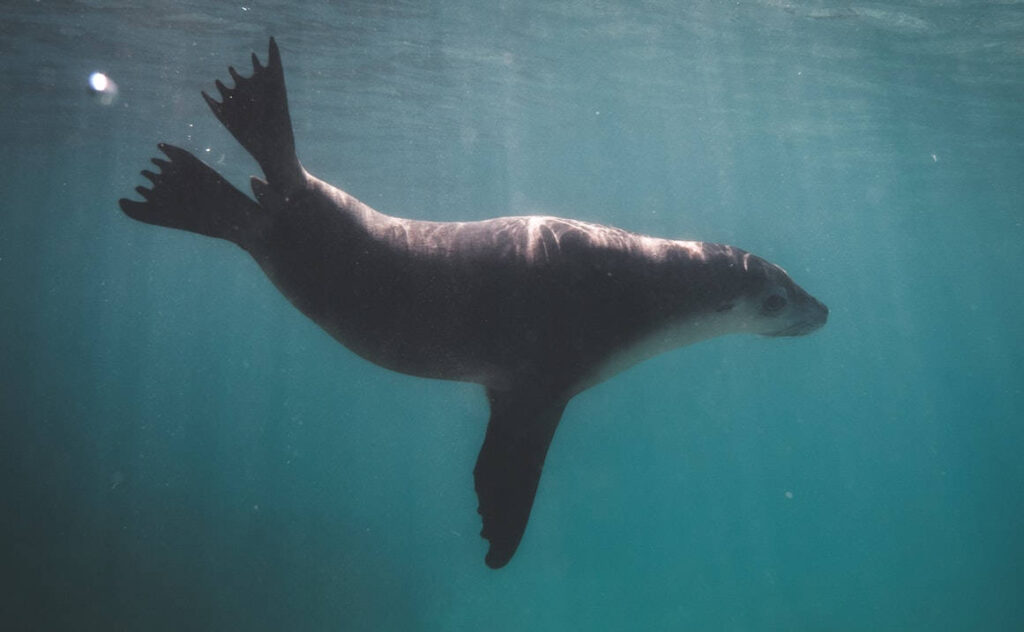
The fluke of the mermaids would have likely also developed from the feet (like in seals), not the end of the tail as in the dolphins [2].
Taken all these features into consideration, mermaids might look more like this:

The question really is if their legs would grow together so that they would turn into a proper tail and how long this would take.
They also most likely would have developed shorter arms that were more cold-resistant and webbed hands that help them swim.
Do mermaid sightings prove that there are real mermaids?
Time and time again, people claim that they have seen mermaids. How can this be?
Sailors and fishermen in particular reported seeing mermaids most often. This was possibly related to the expectation that mermaids would save capsized sailors from drowning.

But perhaps it was also due to the fact that sailors were often not completely sober.
In order to be able to carry drinkable liquid on the ship for a long time, alcohol was often mixed with water to keep bacteria etc. out. Water on its own quickly gets contaminated and is not safe to drink.
If the sailors then looked out to sea slightly drunk, they might have mistaken a manatee for a mermaid. But maybe they did not even have to be drunk.
Even Christopher Columbus claimed to have seen three mermaids on his way to America in 1493. However, he described them as bearded and with the face of a man. He probably also saw a manatee for the first time, because they do not exist in Europe.
A little quiz: if you were a sailor…
Here’s a little quiz: imagine you were on a ship on your way to another country and so far the sea has hardly been explored.
There are many sea creatures that no one has ever seen because the technology doesn’t yet exist to do underwater research.
Also, you’ve been out for a long time and may have had some alcohol with your water.
If you saw these pictures, would you think it was a mermaid? Try squinting your eyes a bit to put yourself in the situation.
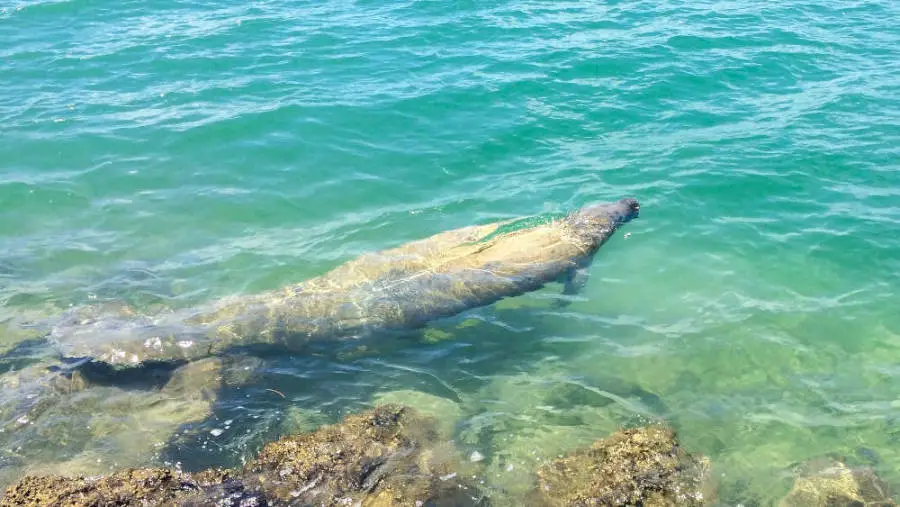
Solution: ˙ǝǝʇɐuɐɯ ɐ sᴉ sᴉɥʇ
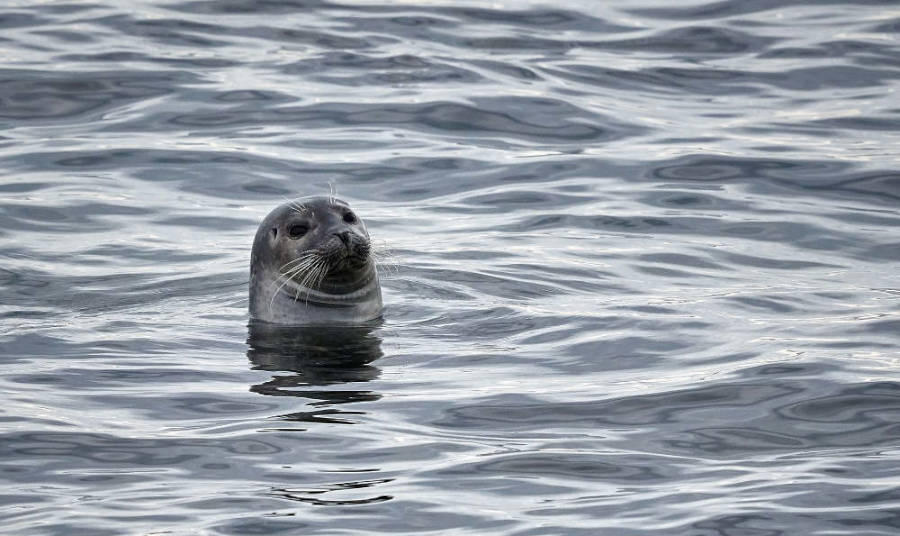
Solution: ˙lɐǝs ɐ sᴉ sᴉɥʇ
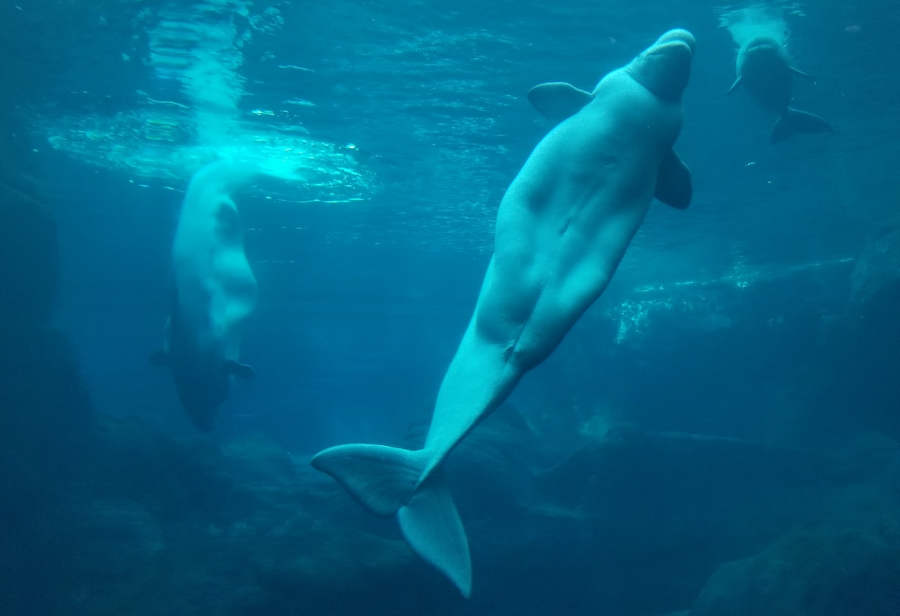
Solution: ˙ǝlɐɥʍ ɐƃnlǝq ɐ sᴉ sᴉɥʇ
Other recent mermaid sightings in South Africa even turned out to be associated with big fish called Dusky cob / Kabeljon.
When the fish jumped out of the water at night a man thought it was a mermaid. The fish has the size of a woman, silvery fish scales and its eyes can shimmer reddish at night.
In this video, you can hear the full story:
Mermaids are actually feared creatures in many peoples’ beliefs in South Africa. So it is no wonder the man got scared. The fact that he mistook a fish for a mermaid is strange though.
Why do people mistake all kinds of sea creatures for mermaids?
The fact that people make or have made such misinterpretations is mainly related to the fear of the unknown in the sea.
So little was known about the sea for a long time that when people saw certain marine mammals or even fish for the first time, they could not place them.
Whenever something is unknown, people try to explain this strangeness with what they know best: humans. This is called anthropomorphization and means that human traits are attributed to non-human beings or things.
That is why in many cultures on earth gods and goddesses of nature have human appearances.
So, the reason why so many people report sightings of mermaids seems to be just that, an interpretation of unknown creatures from the water as half-human, to give the unknown a face.
Do myths prove that there are real mermaids?
One point that might indicate that mermaids could exist is that there are myths of mermaid-like creatures in so many cultures on Earth.
I made a map for an overview of the most well-known mermaid myths from around the world:
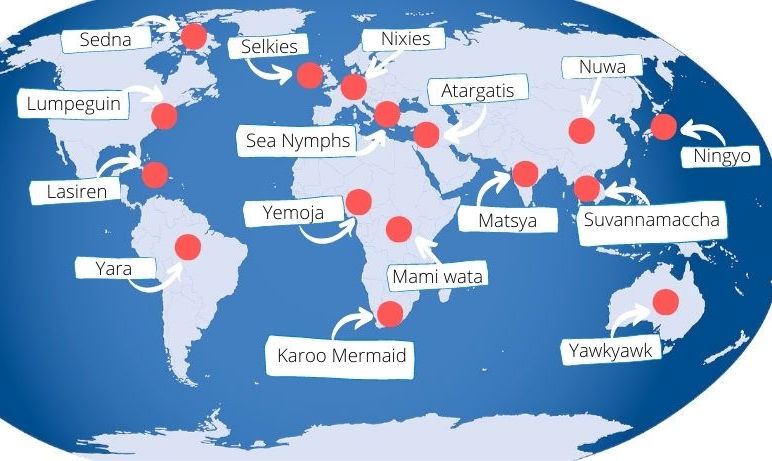
How could all these myths have originated independently all over the world? Doesn’t this mean that mermaids must exist after all?
Generally, if there are myths about something all over the world, it could be possible that the people that live in these places could have all seen a real mermaid once and then started telling stories about them.
But it’s not quite that simple, because there are actually a few significant differences between many of the mermaid myths.
The thing is that some of them are adaptations of other myths, instead of having their own source, and others did not describe mermaids as we know them.
Firstly, there are mermaid-like creatures that look quite different from the half-human and half-fish mermaids we know:
| Creatures similar to mermaids | Appearance |
| Selkies | half seal |
| Lumpeguin | half snake |
| Nüwa | half snake |
| Ningyo | fish with a human head |
The most different creatures are the Irish selkies, who do not look like typical mermaids, but instead like seals. They were shapeshifters and could transform into seals as well as into beautiful women.

Some of these creatures have a snake tail instead of a fishtail. Despite this difference they are today sometimes referred to as mermaids.
A good example is Nüwa, who is a Chinese goddess that had the body or half a body of a snake. There seems to be a connection to the Nagiri from India who also were snake gods.

Although water snakes can look similar to mermaids because of their scaly tails, there seems to be too much of a difference as that you could say that they are connected. The Lumpeguin (also called by the name Ne Hwas in a story) from the Native American Passamaquoddy tribe were also described as snake women [1].
The third creature is the Japanese Ningyo. Even though they are part fish as well, they look very different from the mermaids we know, and much more like a scary monster.
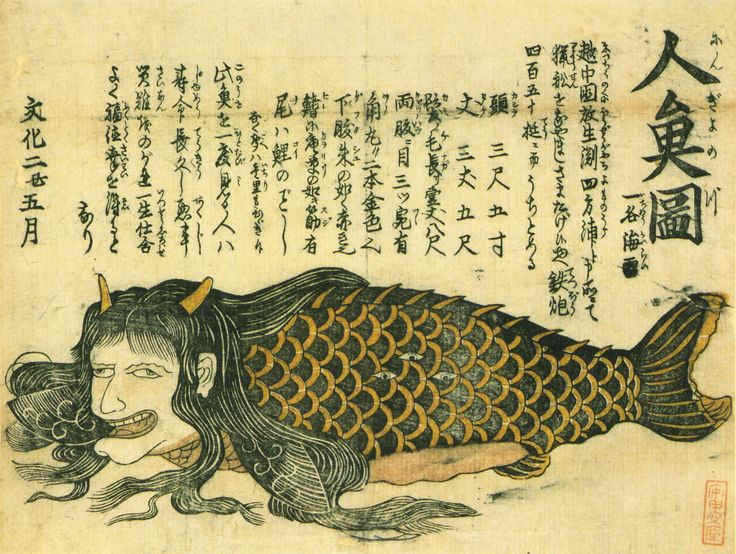
Besides the mermaid-like creatures from around the world, that look obviously very different, there are the ones that are often hardly distinguishable from the typical mermaid.
The thing is though, that in most of these myths the creatures had a different appearance before they started to be represented by mermaid figures.
In fact, many were influenced by the mermaid image that was very popular in Europe since the middle ages: women with fishtails were on churches (sirens), in stories, on ships and more.
Especially when sailors came to other countries during the last centuries they often brought their nautical mermaid symbols, like mermaid figureheads, tattoos, etc., with them.
It is believed that this as well as the general exchange with the Europeans might have influenced some water myths from other countries and led to the locals adopting the idea of the mermaid tail. [1]
Most of the mermaids from the map fall into this category:
| Mermaids that were likely influenced by European mermaid art | Original appearance |
| Sea nymphs | human |
| Nixies | human |
| Sedna | human |
| Yara | human |
| Mami Wata, Yemaya, Karoo Mermaid, Lasiren | human |
| Matsya and Suvannamaccha | fish |
As you can see in the table, most of the mermaid-like creatures were originally described or depicted in a human form.
Two of the creatures on the list, actually stem from European myths as well: the sea nymphs from ancient Greece and the Germanic nixies. Both of them were depicted as human women at first.
The sea nymphs are actually still mostly thought of as women but in fact, they were one of the major influences on how we perceive mermaids today: as friendly beautiful women from the sea that sometimes even save sailors.
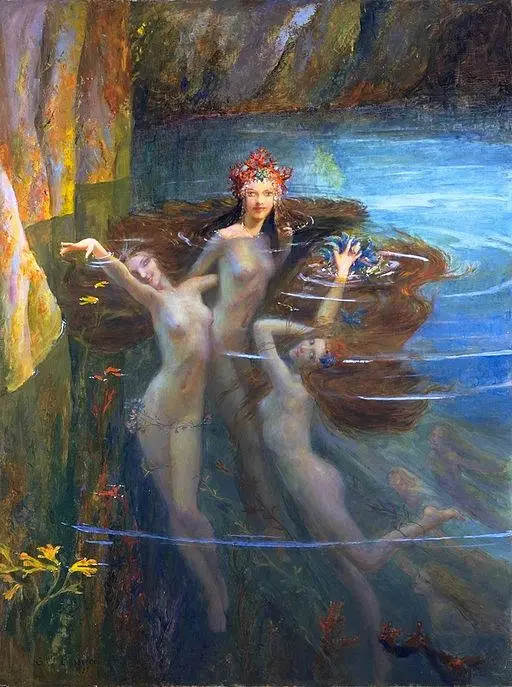
The nixies however have received mermaid tails when these became popular in Europe and are very often depicted with a tail nowadays.
The most famous African mermaid is Mami Wata. But she is also said to have had a human form for most of the time and has only been represented with a mermaid tail since European sailors came to Africa.
She is often depicted with a snake:
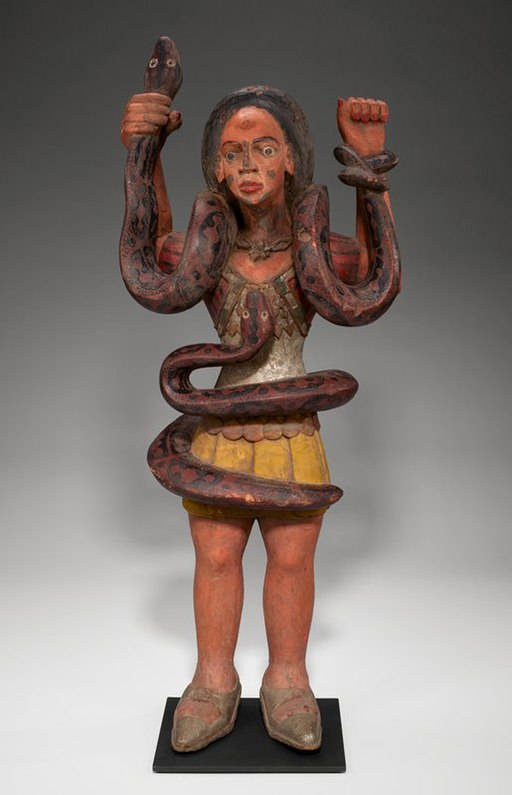
The other two African water spirits Yemaya and the Karoo Mermaid as well as the Haitian mermaid figure Lasiren are believed to be related to the Mami Wata myths and to also have incorporated the European ideas of how mermaids look.
Sedna and Yara are water spirits from the Inuit people in northern Canada and Native American people from Brazil. Like the African mermaids, they were also represented by humans at first, and only later on depicted with mermaid tails. [1]
Besides these mermaid myths that originally feature human women, the Indian and Thai mermaid depictions of Matsya and Suvannamaccha actually go back to a mythical fish. Only much later this fish was represented in a mermaid form (e.g. like this).
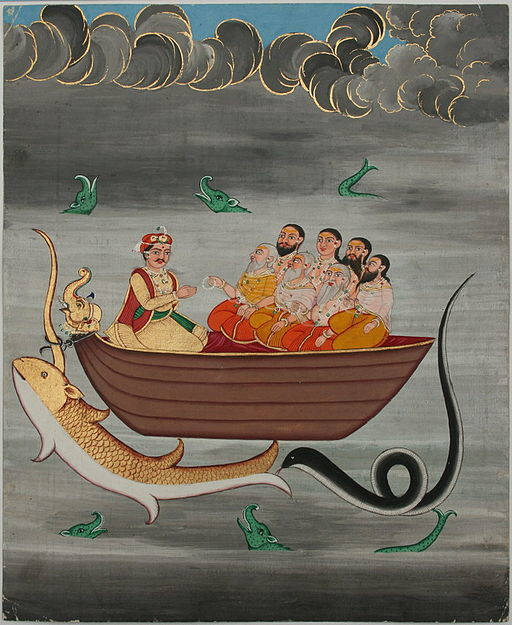
So, only two myths with original mermaid figures are left:
- Atargatis
- Yawkyawk
These two might be the only ones that could have actually been connected to real mermaids.
Atargatis was a water and fertility goddess of ancient Syria who turned into a mermaid when she tried to drown herself after her husband had died.
This myth is the oldest known mermaid myth dating back to 1000 B.C.
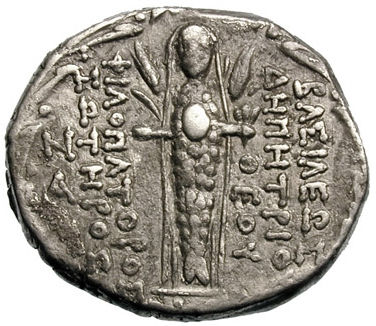
And the Yawkyawk are mermaids from myths of the Aboriginal people of Australia. It is believed that their mermaid myths developed independently of European or other influences.
But even Atargatis was not always described as a mermaid. In some parts of Syria people also worshipped her in human form.
The idea of the mermaid tail however became very popular and spread to ancient Greek mythology where sea gods like Triton and some nymphs had fish-tails (sometimes snake tails too).
From there the image spread to all of Europe, where pictures of fish-tailed sirens became very popular during the medieval era.
So, if there are only two myths that came up with the mermaid figures independently, can you really say that myths can hold as proof that there must be mermaid-like creatures out there?
Well, probably not.
Myths were not meant to describe creatures people had seen in the first place. Instead myths usually focus on natural phenomenons that are explained with the help of imaginary humanized creatures.
Describing mermaids was more of a way of explaining the symbolic power, fertility as well as the danger of the water and not so much a real creature.
In addition, many mermaid stories from later eras had another goal: to tell a story about the faults of women.
For example, the stories from the Middle Ages were meant to denounce female vanity and stubbornness: retellings of the ancient sirens represented the manipulative woman who lured sailors with her beautiful song, only to kill them.
[Related: 17 reasons why sirens are not mermaids]
The image we have of mermaids today is mainly shaped by the fairy tale of Hans Christian Andersen, which solidified the idea of a beautiful, friendly mermaid in people’s minds.
In conslusion, myths have mostly fictional roots and cannot prove that there are real mermaids.
But what about the people who claim to have seen a mermaid with their own eyes?
Fakes used to try to show that mermaids are real
As mermaids became more popular in the 19th century after Hans Christian Andersen’s fairy tale of The Little Mermaid appeared in 1837, more fakes were also produced.
The most famous mermaid fake was the Fiji Mermaid, which was exhibited by the showman P.T. Barnum in America in 1842.
As it later turned out, it was not a mermaid at all, but a monkey sewn to the lower part of a fish:
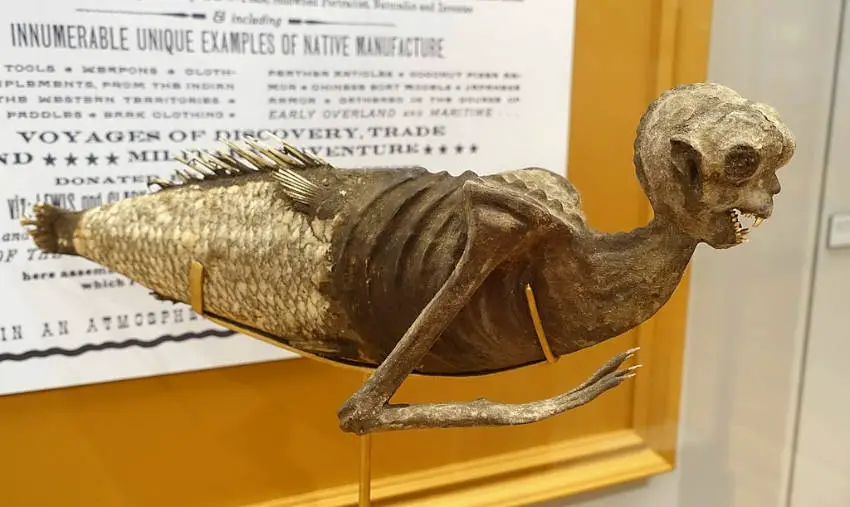
Even today, thanks to Photoshop, etc., there are many fake videos and pictures of alleged mermaids to be found on the Internet.
Many of them belong to the fake-documentary “Mermaids: The Body Found” which aired on the US channel Animal Planet in 2012. You can watch the whole fake-documentary here on Youtube.
It was a documentary about mermaids that also referred to the mentioned aquatic ape theory, except that the supposed proof was all made up and the scientists were just actors.
However, some people fell for it and have since distributed the alleged findings on the Internet.
One of these alleged proofs are cave paintings that show mermaids. Here is the clip from the fake-documentary:
Such a cave really exists, it is called the Cave of the Swimmers and is located in Egypt.
But in the real cave, there are no mermaids to be found. Only swimming people are depicted, without any fishtails of course.
The images from the fake documentary are edited and not real.
Another clip of that fake documentary shows how tourists film a mermaid jump from a cliff. In this one, it is easy to tell that the video is fake just by listening to the bad acting.
Other fakes include the photos of the mermaid replicas for the Pirates of the Caribbean 4 movie, which were depicted as a stranded mermaid. And then there was the mermaid skeleton, which was created with Photoshop.
It happens again and again that people get tricked with such fakes.
The main reason why it is so easy to trick people is certainly that most of us like the idea that mermaids do exist. So there might be a bit of fishful thinking involved.
There are human mermaids
As I showed in this post, sadly neither science nor myths, sightings or fakes can prove that mermaids are real.
But even if their existence is very unlikely, we cannot 100% rule it out.
Who knows, maybe they are much more intelligent than us and are just really good at hiding themselves.
One thing is for sure though: Even though there are probably no real mermaids that are half-human and half-fish, there are definitely other mermaids:
People who put on mermaid tails to immerse themselves in the world of mermaids and practice the sport of mermaiding.
The great thing about it is that you don’t have to be a mythical creature to turn into a mermaid.
If you want to learn more about it, you can read my article about how to become a mermaid here.
And here I compiled a list of beautiful pictures of real human mermaids on Instagram.
Literature:
[1] Cristina Bacchilega and Marie Alohalani Brown [Editors] (2019). The Penguin Book of Mermaids. Penguin Classics.
[2] Bethany Betancourt (2020). A Proposal for the Anatomy of Mermaids.

